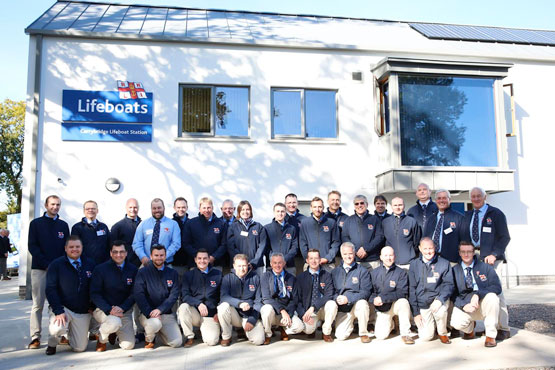#RNLI - Enniskillen RNLI is looking for new volunteer crew members to join its search and rescue service on both Upper and Lower Lough Erne in Co Fermanagh.
The lifeboat station currently has 40 volunteers to cover its inshore service on the Lower Lough at Killadeas and the Upper Lough at Carrybridge but is now calling on new volunteers to come forward and find out how they can get involved and help the station to continue to save lives on inland waterways.
And to that end, the station will be hosting an open evening at the new lifeboat station at Carrybridge next Thursday 29 October for all interested candidates to learn more.
Enniskillen RNLI was established in May 2001 and became the charity’s first inland lifeboat station. Today, a great team spirit between Enniskillen’s management, crew and committee members creates an efficient and professional service on the Lough Erne waterway, which works closely with other emergency services to keep water users safe.
Last year, Enniskillen RNLI launched 59 times and brought 57 people to safety.
Now, Jimmy Dundas, Enniskillen RNLI lifeboat operations manager on Lower Lough Erne, is calling on any volunteers who may be interested to come along to the station on Thursday evening and find out more.
"We are looking for anyone aged 17 years and over who is willing to offer some of their free time to join what I believe to be, one of the most exhilarating and rewarding voluntary services that is out there," he says.
"Every volunteer receives first class training from the RNLI and learns new skills which can benefit them in many walks of life. Lifeboat crew members need to have a reasonable level of fitness, have good eyesight and not be colour blind.
"Anyone who would like to volunteer but feels they would not meet the requirements for lifeboat crew should in no way be put off, as shore crew also play an essential role in the launch and recovery of the lifeboat when it goes on service."
Anyone who feels they have the time and commitment to volunteer for the charity, which is on call 24 hours a day and 365 days a year, is asked to email Jimmy at [email protected].
Alternatively, prospective volunteers can come along to the station’s open evening from 7pm on Thursday 29 October at Carrybridge lifeboat station.
































































